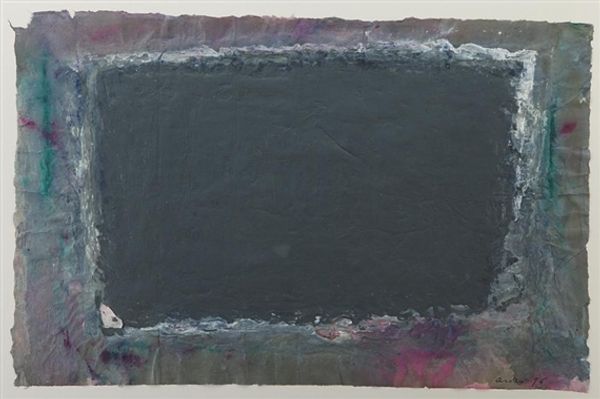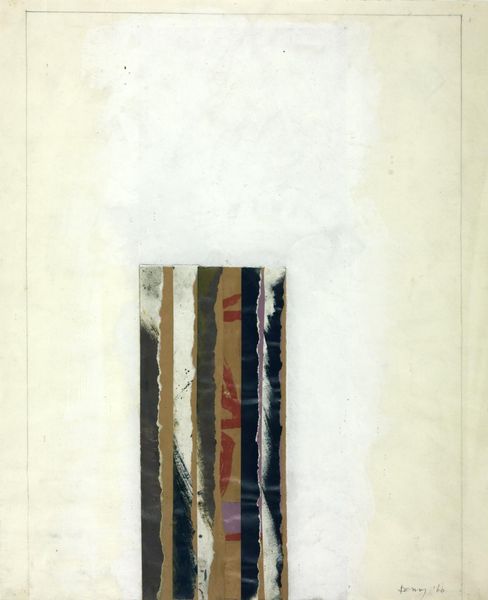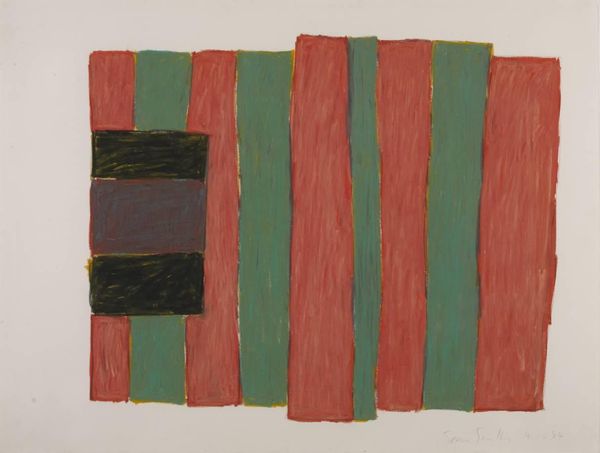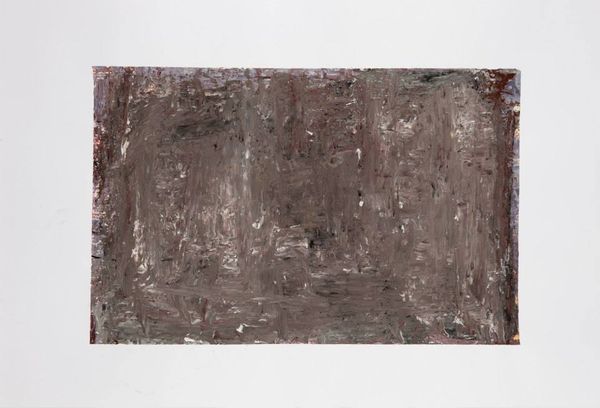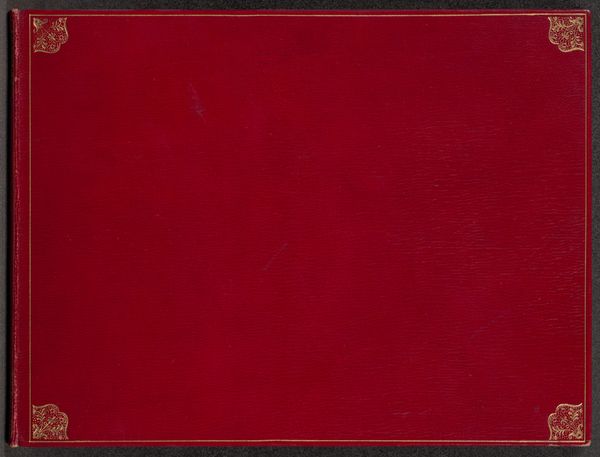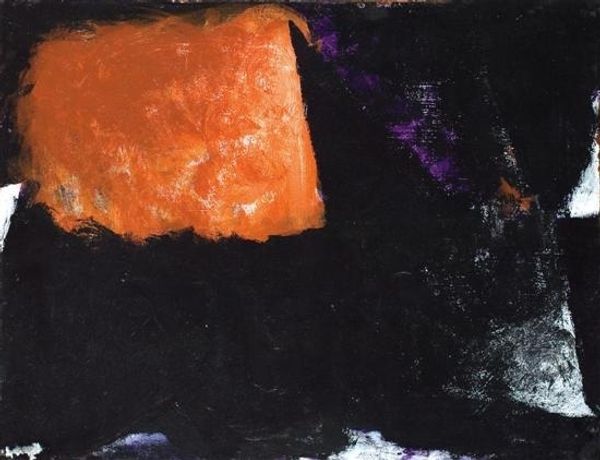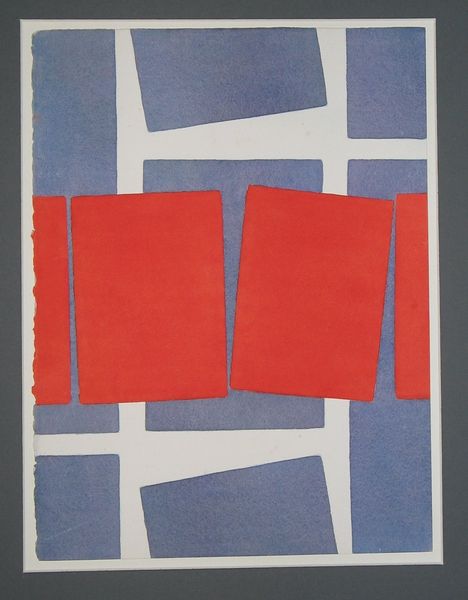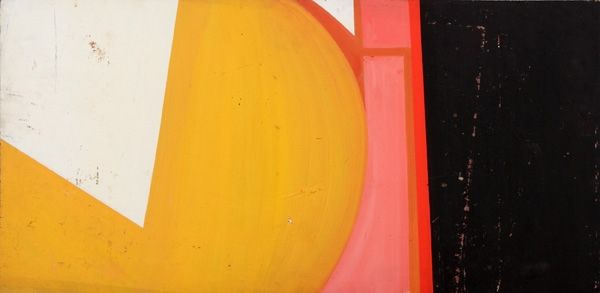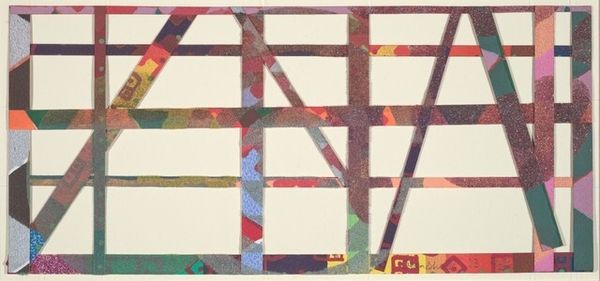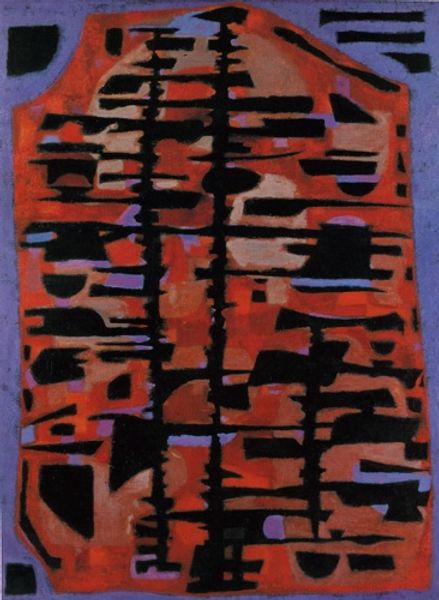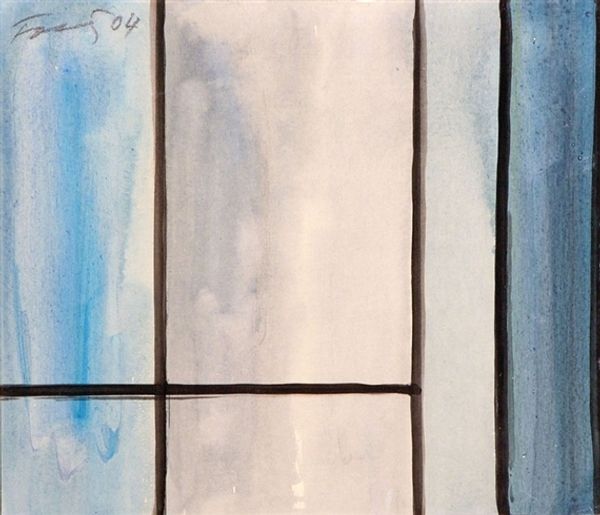
oil-paint
#
abstract-expressionism
#
abstract expressionism
#
abstract painting
#
canvas painting
#
oil-paint
#
form
#
oil painting
#
abstraction
#
monochrome
Copyright: Forrest Bess,Fair Use
Curator: Let's discuss Forrest Bess's "Untitled, No. 12a" from 1957, executed in oil on canvas. What are your initial impressions? Editor: A stark contrast! The two stark white squares against that deeply hued, almost brooding, black ground create an immediate tension. It's deceptively simple, yet the rawness of the right edge—is that texture applied with a palette knife? stirs something visceral. Curator: Precisely. Notice how Bess employs geometry—the precise squares—in stark contrast to that textured, almost organic form pushing in from the right. That tension between the geometric and the organic is central to its dynamism. I’m interested in the work’s use of forms. Editor: Right, it reads like the ordered rationality represented by those forms on the left is literally being disrupted, even overtaken, by material processes and a painterly mess, from the right, which is compelling. Is it purely psychological, or could there be something in his labor or process that sheds light on it? It seems his materials and his mark-making have real agency here. Curator: It's not just an aesthetic effect; it represents Bess's quest to visually manifest his personal mythology—a search for inner realities made tangible through external forms. Look at the careful layering and scraping back of paint that he deployed to build up this image; the composition here, that carefully arranged set of relationships, are clearly about something deeply subjective. Editor: You know, it is interesting how that build up contrasts with other areas. Consider those touches of what looks like gold leaf flecking within that textured section, interrupting that crude, immediate facture—perhaps a reflection on the artist's own engagement with ideas of alchemy and the transformative properties of making? Curator: Potentially. Though I'd say any alchemical reference here functions symbolically. We're invited to consider formal balance and imbalances of power inside the canvas—how does he create this dichotomy within this space? And that monochrome field functions in some ways like a pictorial black hole: note how our focus remains resolutely within that tension of contrasting pictorial vocabularies. Editor: It really draws one in. And I’m also looking at the raw edges of that organic form, with flecks of bare canvas revealed there. The means by which he achieved this feels central—an act of adding and subtracting, a very physical dialogue between the artist and the materiality of paint. It’s this, perhaps, where that power really exists. Curator: An intriguing counterpoint. Thank you. Editor: Thanks for drawing me in.
Comments
No comments
Be the first to comment and join the conversation on the ultimate creative platform.

